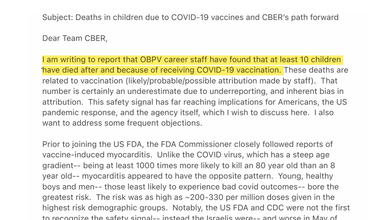- Health Conditions A-Z
- Health & Wellness
- Nutrition
- Fitness
- Health News
- Ayurveda
- Videos
- Medicine A-Z
- Parenting
You Will Be Surprised: THIS Chronic Condition Could Be the Hidden Reason You Cannot Conceive

Credits: Canva
When couples struggle to conceive, they usually think of hormone imbalances, advancing age, or lifestyle problems. But did you ever imagine that the real hindrance could be something as silent as chronic inflammation? It does not make headlines like PCOS or low sperm count, yet it silently disrupts the reproductive system in both men and women. And yes, it could be standing between you and your dream of parenthood.
Inflammation is More Than Just Swelling
Dr. Rupali Tambe, Fertility Specialist at Nova IVF Fertility, Lullanagar, explains that chronic inflammation is increasingly being linked to infertility. “Some conditions, such as infections, endometriosis, and polycystic ovary syndrome (PCOS), are marked by inflammation. This can impact the uterus and cervix, ultimately reducing the chances of conception,” she says.
Inflammation is like the body’s fire alarm. It is helpful when you have hurt yourself or caught an infection. But when the alarm does not switch off, the body is stuck in a low-level state of stress, which can interfere with ovulation, sperm production, and even implantation.
The Science of Why It Affects Fertility
According to Dr. Mandavi Rai, Senior Fertility and IVF Specialist at Motherhood Fertility & IVF, Noida, the trouble goes deeper than you think. “Chronic inflammation due to conditions like PCOS, autoimmune diseases, poor diet, or stress can impact the ovaries, fallopian tubes, and uterus in women. In men, it damages sperm production, count, and motility,” she points out.
For women, this could mean poor egg quality, scarring of the fallopian tubes due to pelvic inflammatory disease or endometriosis, or hormonal imbalances that block ovulation. For men, issues like orchitis (testicular inflammation) or varicocele (enlarged veins in the scrotum) can heat things up. Higher testicular temperature disrupts sperm formation, leaving fewer healthy swimmers.
Can Diet Calm the Fire?
You do not have to live with inflammation forever. Dr. Tambe says that studies suggest an anti-inflammatory diet may boost pregnancy rates in women and even improve sperm quality in men.
An anti-inflammatory diet would include foods like salmon, walnuts, flaxseeds, berries, mushrooms, leafy greens, tomatoes, yoghurt, and even kimchi. Avocados, turmeric, ginger, kale, and green tea also make the cut. These foods are packed with antioxidants and healthy fats that cool inflammation naturally.
And Dr. Tambe advises skipping processed, fried, and sugary foods. That means saying no to French fries, pizzas, pastries, namkeens (salty mixtures), and fizzy drinks. Basically, if it comes in a packet or is dripping with oil, it is not doing your fertility any favours.
Beyond Food Choices
Food is not the only reason here. Dr. Rai stresses that daily exercise, quitting smoking and alcohol, and maintaining a healthy weight are essential. “Regular activities like swimming, cycling, or yoga reduce inflammation markers in the body and improve reproductive health,” she says.
Do not forget stress. Chronic stress itself is a proven inflammation trigger. Meditation, deep breathing, or just unplugging from your phone for an hour a day can help quiet your nervous system. And yes, quality sleep, at least 7 to 8 hours, acts as nature’s best anti-inflammatory pill.
When Lifestyle Changes Aren’t Enough
Sometimes, lifestyle fixes and diets cannot tackle severe inflammation. That is when medical interventions step in. Non-steroidal anti-inflammatory drugs (NSAIDs), antibiotics (for infections), or hormonal treatments may be prescribed by specialists.
For couples facing stubborn infertility, assisted reproductive technologies (ART) like IVF or ICSI can provide hope. “Women with infertility who followed an anti-inflammatory diet during IVF had better pregnancy outcomes compared to those who didn’t,” Dr. Tambe says.
Infertility is rarely caused by a single factor, but chronic inflammation is an under-recognised condition. The right mix of an anti-inflammatory diet, lifestyle changes, and expert care can make all the difference.
Leaked FDA Memo Sparks Fierce Debate Over Rare Vaccine-Linked Child Deaths

Credits: Canva
After the Thanksgiving, on Friday, the Food and Drug Administration (FDA)'s top vaccine regulator, Vinay Prasad made a clam that shocked the public-health established. "For the first time, the US FDA will acknowledge that COVID-19 vaccines have killed American children," he wrote in a leaked email to his staff, as reported by The Atlantic and The Washington Post.

The agency has identified that at least 10 children died after getting COVID shots.
The email has been perceived by physicians as a "threat". A response from 12 former FDA commissioners, published in The New England Journal of Medicine on Wednesday, called Prasad's memo "a threat to evidence-based vaccine policy and public health security". All of the potential vaccine related deaths reported to government were already reviewed by the agency's staff, and had reached "different conclusions", wrote the former commissioners.
Elsewhere, doctors and scientists have declared that there are no evidence that links COVID-19 vaccines to deaths in children. The commissioners have claimed that in an attempt to deliberately bring evidence, Prasad and his colleagues had engaged in an "evidence-manufacturing mission", a "dumpster dive" for shoddy data, or worse, a campaign of lying.
Prasad is one of several public health officials who, under Robert F. Kennedy Jr.’s leadership, have been steadily chipping away at public trust in vaccines. So far, he has not provided evidence to back his claims, and his estimate of vaccine-related deaths may be exaggerated. The memo’s intense language and focus on political complaints also cast doubt on his assertions.
However, something that cannot be ignored is that fact that his memo may have provoked people to deny even the possibility of COVID-vaccine-related deaths. The Atlantic notes that "the idea that mRNA-based shots have, tragically, killed a very small number of children is not far-fetched." The article written by Benjamin Mazer, a physician who specializes in pathology and laboratory, notes that the this does not imply a "catastrophic threat to public health" as tens of millions of doses of the same vaccines have saved young people.
Understanding the Debate Of Vaccine-Linked Deaths
Public-health experts agree that COVID vaccines, like all medical treatments, can cause side effects. Myocarditis, a rare heart inflammation seen mostly in adolescent boys and young men after mRNA shots, remains the most discussed risk. Although usually mild and far less severe than virus-induced myocarditis, a few deaths have been documented worldwide, including isolated cases in the U.S., South Korea, and two American teenagers described in a peer-reviewed report.
These findings fuel ongoing debate about whether extremely rare vaccine-related deaths are being overlooked. Some scientists, including Paul Offit and Michael Osterholm, say the evidence does not prove the vaccines caused these deaths, noting that population-level studies show no rise in mortality after vaccination. Others argue that well-investigated autopsy-confirmed cases should be taken seriously rather than dismissed outright.
Experts such as Krutika Kuppalli, as cited by Mazer, emphasize that even if deaths occur, they are so uncommon they do not appear statistically, while the benefits, significantly reduced COVID mortality, are unmistakable. However, individual cases still raise questions on health authorities and the stricter standards of proofs they have applied when vaccines were involved to create a room for skepticism.
The concern is that rare side effects of vaccines could go undiscovered and not that vaccinations are inherently harmful.
This ONE Key Symptom Will Help You Differentiate Flu From COVID, According To Doctor

Credits: iStock
Are you down with fever? Are your symptoms also a little less common from an ordinary cold? Are you also confused between flu and COVID? Then knowing this one symptom could help you set flu apart from COVID. Dr Rupa Parmar, a GP and medical director at Midland Health tells The Mirror, that shortness of breath could be a key symptom that could differentiate between the two.
Dr Parmar highlights that it is a key indicator for COVID. "Shortness of breath is rare in both a cold and the flu, but as COVID more so affects the lungs due to inflammation, it is a common symptom."
The NHS website supports her advice, noting that breathlessness is a symptom more often tied to Covid, not the flu or a common cold. This kind of breathing difficulty is usually associated with infections like Covid or respiratory syncytial virus (RSV).
What Else Could Help You Know If You Have A COVID or Flu?
The nature of your cough could also help you understand different ailments. Dr Parmar said that a cold would produce a mild cough, whereas a flu cough could be more dry. However, with covid, "a cough will be dry and continuous, and many people will cough for more than an hour or have three or more coughing episodes within a day."
If one has lost their sense of smell or taste, then the chances are, this could be COVID. However, this symptom is also present in cold or in a flu.
For people who have Covid, the NHS advises staying home and avoiding contact with others if they or their children have symptoms and either develop a high temperature or feel too unwell to work, attend school, manage childcare, or carry out daily activities. If you are unsure about the cause, it is important to speak with a doctor.
Dr Parmar emphasized: "after all, it is always better to be safe than sorry when it comes to health."
What Is Flu?
The flu is a common respiratory illness that happen from the influenza virus. The common flu symptoms are:
- Fever
- Sore Throat
- Runny Nose
- Fatigue
- Body Aches
- Cough
- Headaches
What Is COVID-19?
As per the US Centers for Disease Control and Prevention (CDC), COVID-19 is a respiratory illness caused by the coronavirus. The common symptoms include:
- Fever
- Cough
- Fatigue
- Headache
- Nausea
- Sore Throat
- Runny Nose
- Loss of smell or taste
COVID-19 could also have some long-lasting symptoms unlike flu or cold, that could seem unrelated to the original infection.
As per the Ohio State University, the most recent COVID variant is XFG or the Stratus variant. Another new variant that causes the 'razor blade' like sore throat is Nimbus.
The symptoms of this new variant includes:
- Congestion
- Cough
- Fever
- Headache
- Sore throat
- Muscle Aches
'Razor blade' Throat
NB.1.8.1 or the Nimbus variant is a subvariant of Omicron, which is a dominant COVID variant since late 2021. Omicron variants tend to cause more throat problems than the other variants seen earlier.
The COVID virus binds to ACE2 receptors. According to WebMD, the cells in your nose and throat contain more ACE2 receptors than those deeper in the lungs, which makes them easier targets for Omicron variants. Once the virus attaches to these receptors in the upper airway, your immune system begins to respond.
As CDC Reconsiders Longstanding Hepatitis B Vaccines For Newborns, We Fact Checked The Claims Made By The Panel

Credits: Canva
Ever since the Trump administration has come to power, sentiments against vaccines have gone up. Many vaccine critiques have been handpicked by the anti-vaxxer HHS Secretary RFK Jr. as health officials. So it is no surprise that now the Centers for Disease Control and Prevention's Advisory Committee on Immunization Practices (ACIP) is now recommending that mothers who test negative for hepatitis B should discuss the need for the vaccine with their doctors. If parents choose to delay the birth dose, the first shot should be given at no earlier than two months of age. This is dropping the longstanding hepatitis B vaccine guideline that stated that every newborn receive the first dose of the hepatitis B vaccine shortly after birth. This recommendation, in place since 1991, was reversed on December 5 after a key CDC advisory committee voted to change the policy.
This committee was appointed by Health and Human Services Secretary Robert F. Kennedy Jr., who dismissed all 17 previous members earlier this year. The shift in policy has triggered wide debate, especially in the medical community, because it overturns one of the longest standing infant vaccination guidelines in the United States.
Below are some of the claims made by the panel, both sides, who debated the vaccine's need or unimportance for all infants.
Hidden Hepatitis B Infections Make Risk Hard to Judge
Claim: Several ACIP members questioned whether babies considered “low risk” truly need a hepatitis B shot at birth. But hepatitis B is not always easy to detect or trace.
The virus spreads through bodily fluids such as blood, semen and vaginal fluids. It is also extremely resilient and can survive on surfaces for up to a week. Even tiny amounts of dried blood from everyday items like razors, toothbrushes or nail clippers can carry the virus.
Hepatitis B often has no symptoms for years. The CDC estimates that 640,000 adults in the United States live with chronic hepatitis B, and half do not know they are infected. This means that even if a mother tests negative during pregnancy, her newborn can still be exposed through family members or other caretakers. Before universal birth-dose vaccination began, only half of infected children under age ten had contracted the virus from their mothers at birth.
Because so many people are unaware of their infections, determining true risk is complicated.
The Vaccine Protects the Most Vulnerable: Newborns
Claim: Some committee members suggested that vaccinating all newborns mainly protects adults or others at higher risk.
That claim is misleading. The primary purpose of giving the shot at birth is to protect infants, who face the most severe long-term consequences of infection.
Hepatitis B attacks the liver. If an infant becomes infected, there is a very high chance the disease will progress into a chronic lifelong condition. About a quarter of those children eventually die prematurely from liver failure or liver cancer. While treatments exist to reduce complications, there is no cure.
Dr. James Campbell, a pediatric infectious disease specialist at the University of Maryland, reminded the committee that the vaccine strategy transformed public health outcomes. “We used to have 18,000 or 20,000 kids born with this every year, and a quarter of them would go on to develop liver cancer. We now have almost none,” he said.
Falling Infection Rates Show Vaccines Worked
Claim: Hepatitis B infections fell sharply after the birth-dose recommendation took effect. Before vaccination became routine, up to 300,000 Americans were infected annually. About 20,000 of those were children.
Today, total annual cases have dropped to around 14,000. Among people under 19, chronic infections have reached extremely low levels. In 2022, the CDC documented only 252 new cases in this age group.
ACIP member Dr. H. Cody Meissner, who voted against changing the policy, argued that declining numbers do not justify easing precautions. “It is a mistake to say that because we are not seeing much disease, we can change the schedule,” he said. “If we do, hepatitis B infections will come back.”
The United States Is Not an Outlier
Claim: Some committee members compared U.S. policy to countries such as Denmark, which does not vaccinate all newborns.
However, the United States is far from alone in recommending a universal birth-dose. According to CDC data from September 2025, 116 out of 194 World Health Organization member countries recommend hepatitis B vaccination at birth.
Denmark does not include hepatitis B in its standard childhood schedule, but it has a centralized national health system, higher prenatal screening rates and less fragmented medical records. The United States lacks these structural advantages, which makes relying solely on maternal testing more challenging.
© 2024 Bennett, Coleman & Company Limited

